Nieuwbouw Energy Academy in Groningen klaar voor inhuizing onderwijs en onderzoek
In recordtempo is het meest duurzame onderwijsgebouw van Nederland verrezen op de Zernike Campus Groningen: de Energy Academy (EA). Na een bouwtijd van slechts 18 maanden hebben ENGIE Services en Bouwcombinatie Friso-Koopmans de sleutels van dit unieke gebouw op 14 oktober overgedragen aan de Rijksuniversiteit Groningen (RUG). Hiermee is een ambitieus bouwproject afgerond en is een inspirerende omgeving gemaakt voor organisaties die zich inzetten voor de transitie naar duurzame energie.
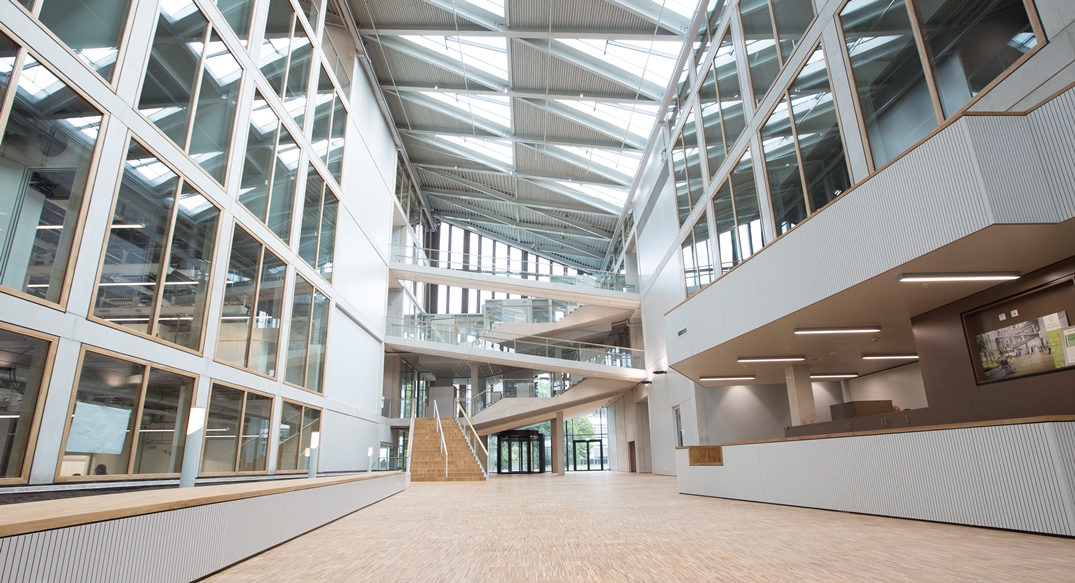
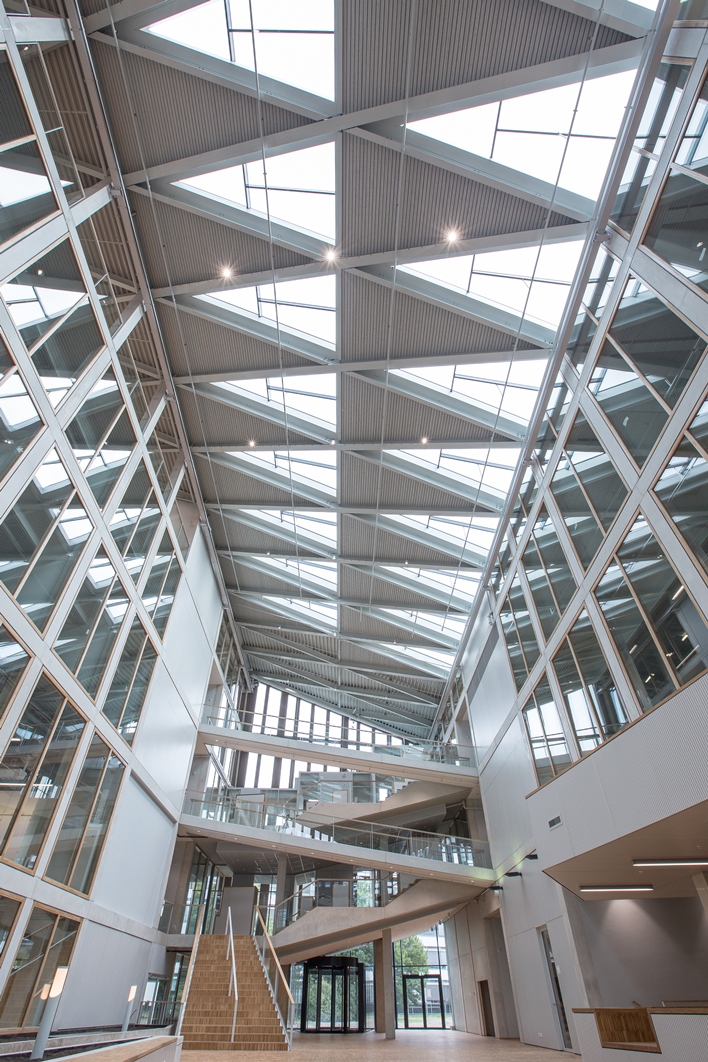
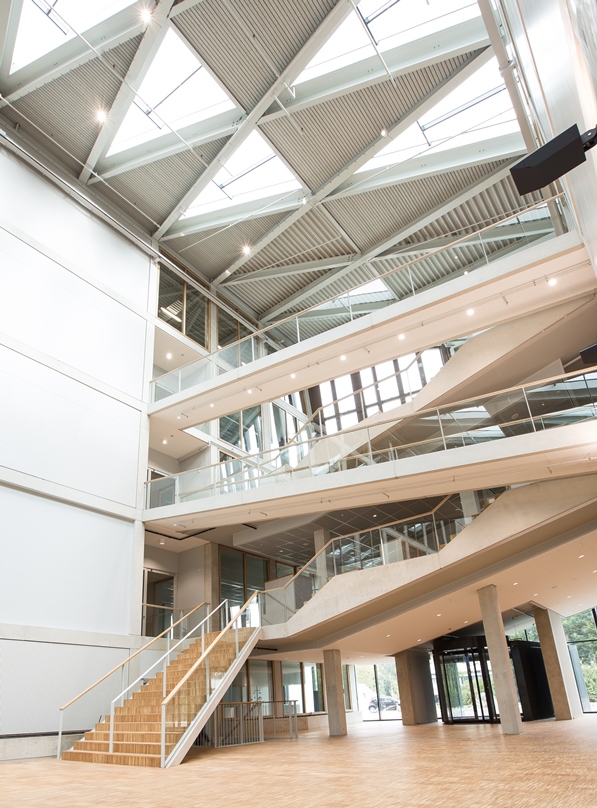
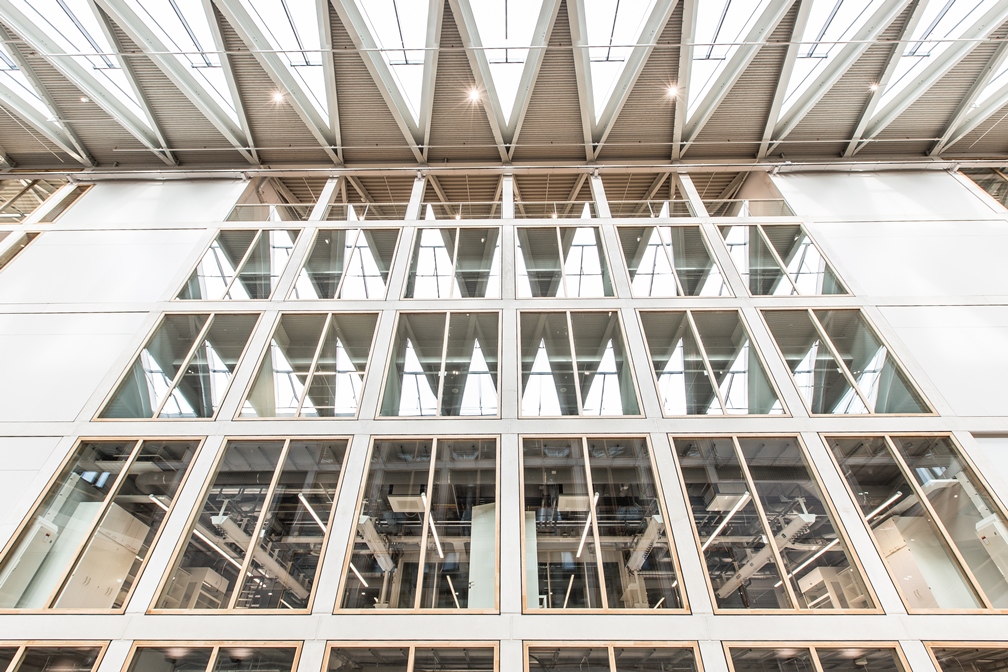
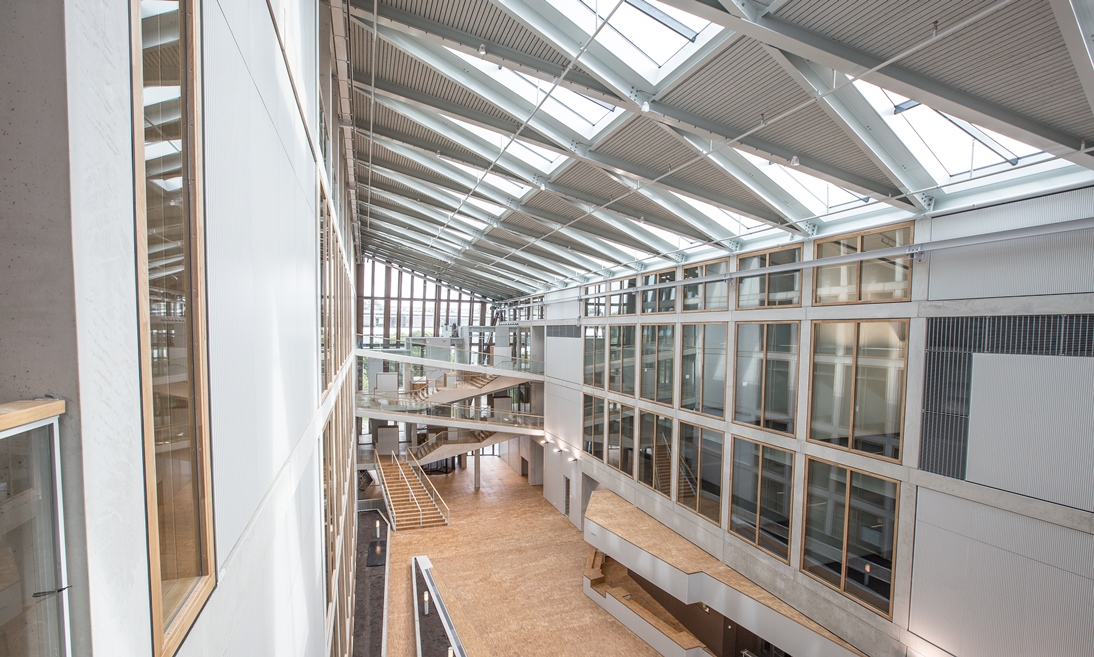
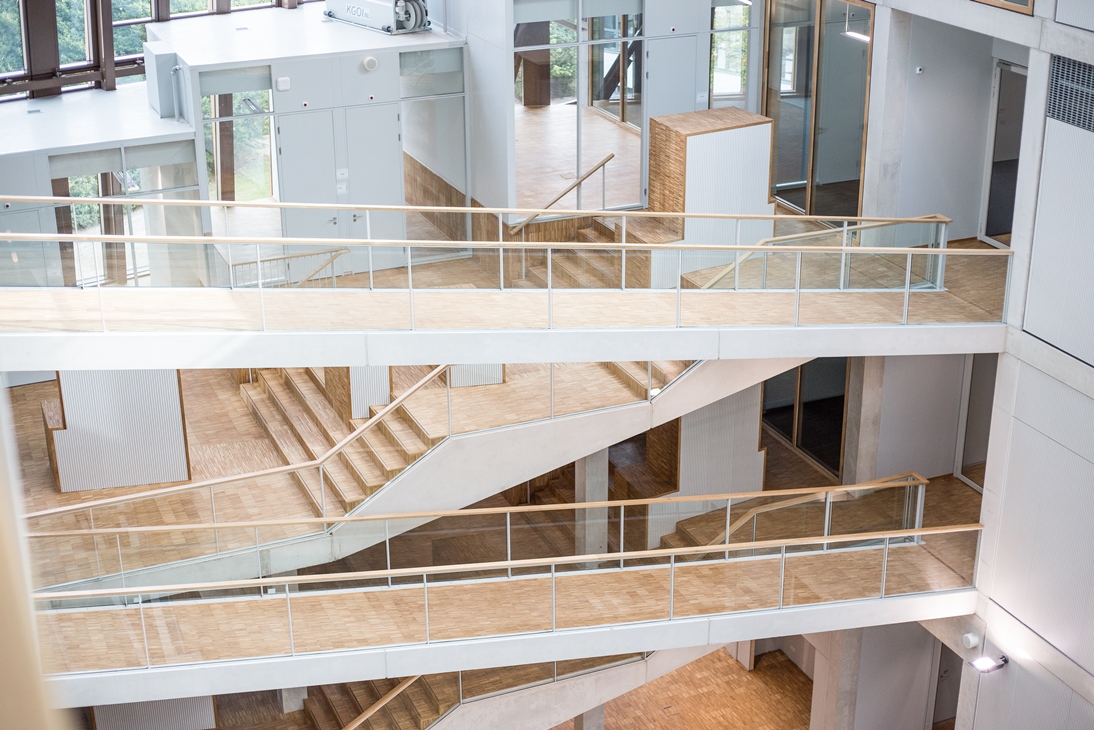
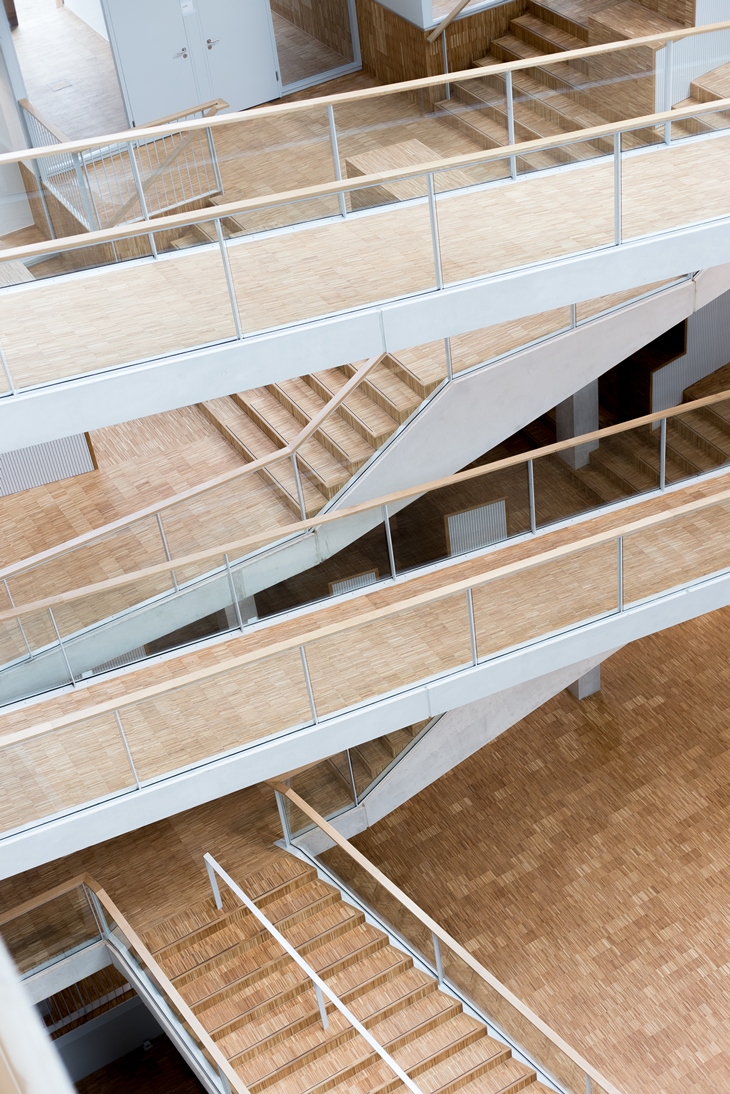
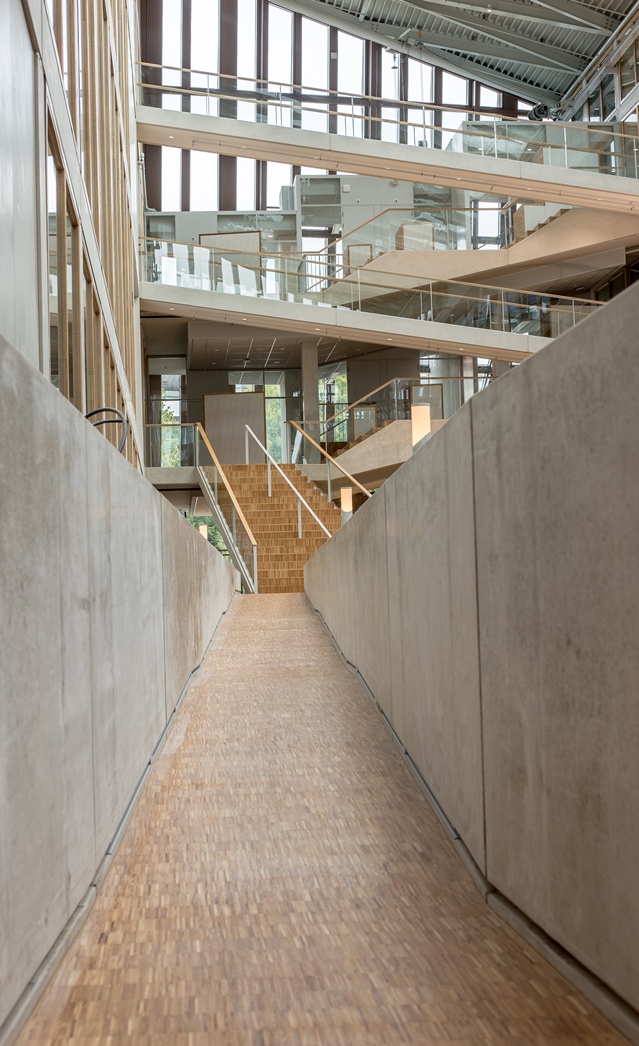
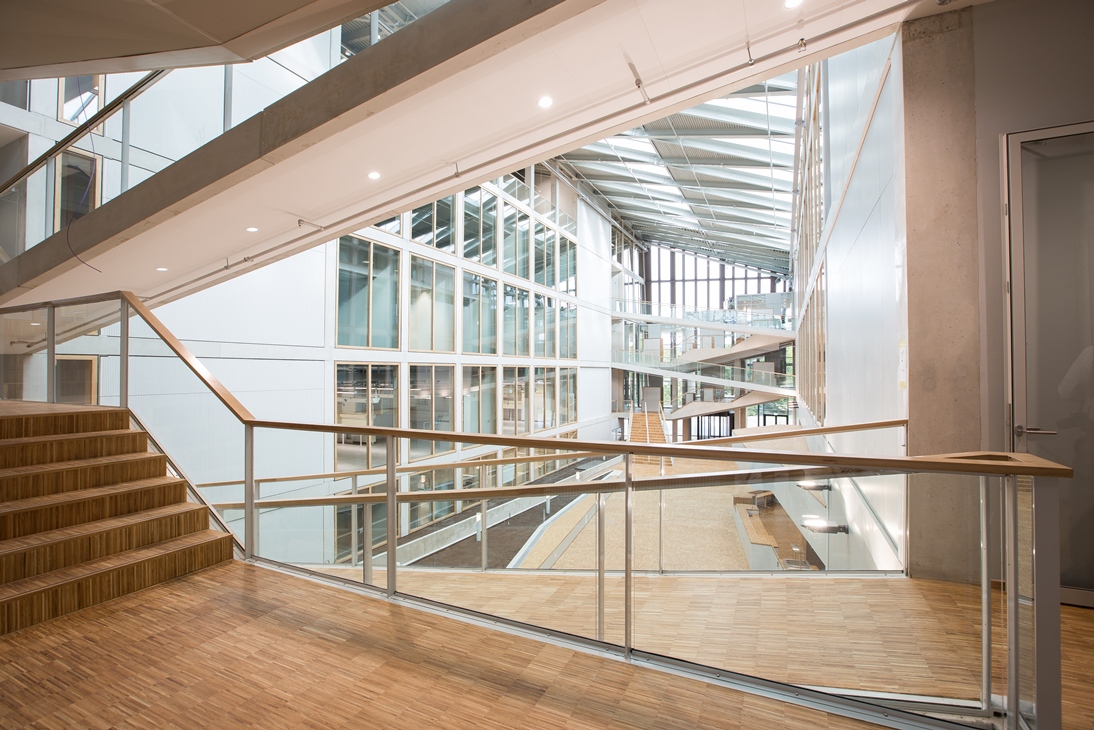
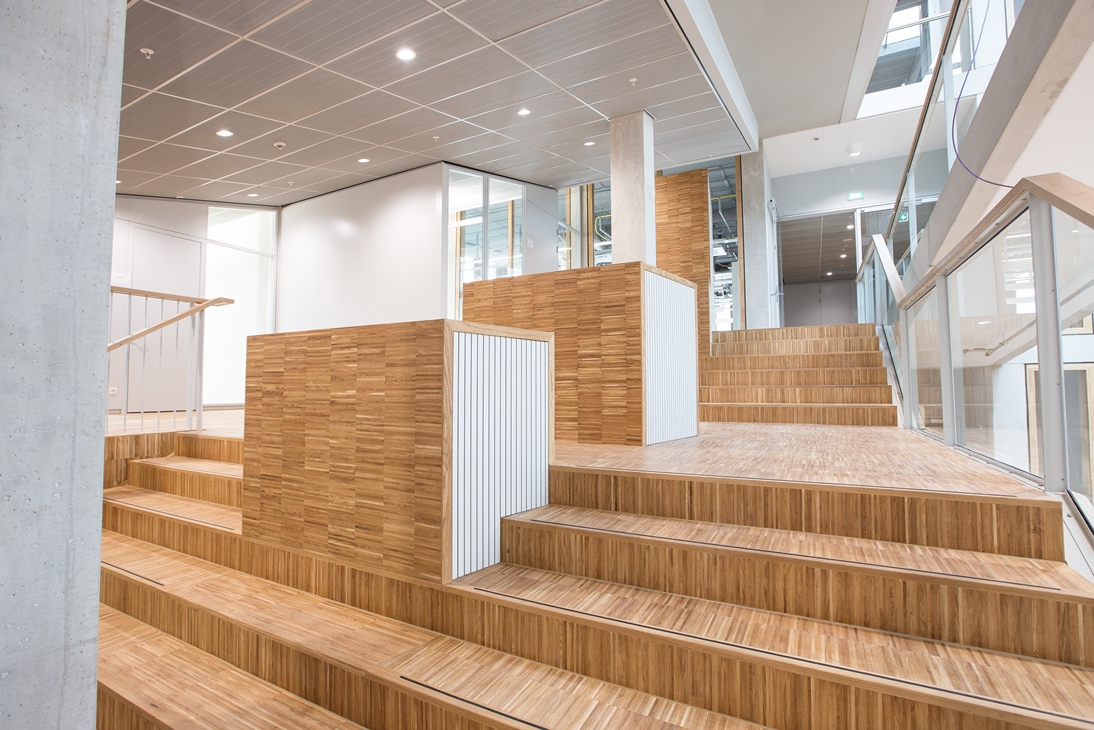
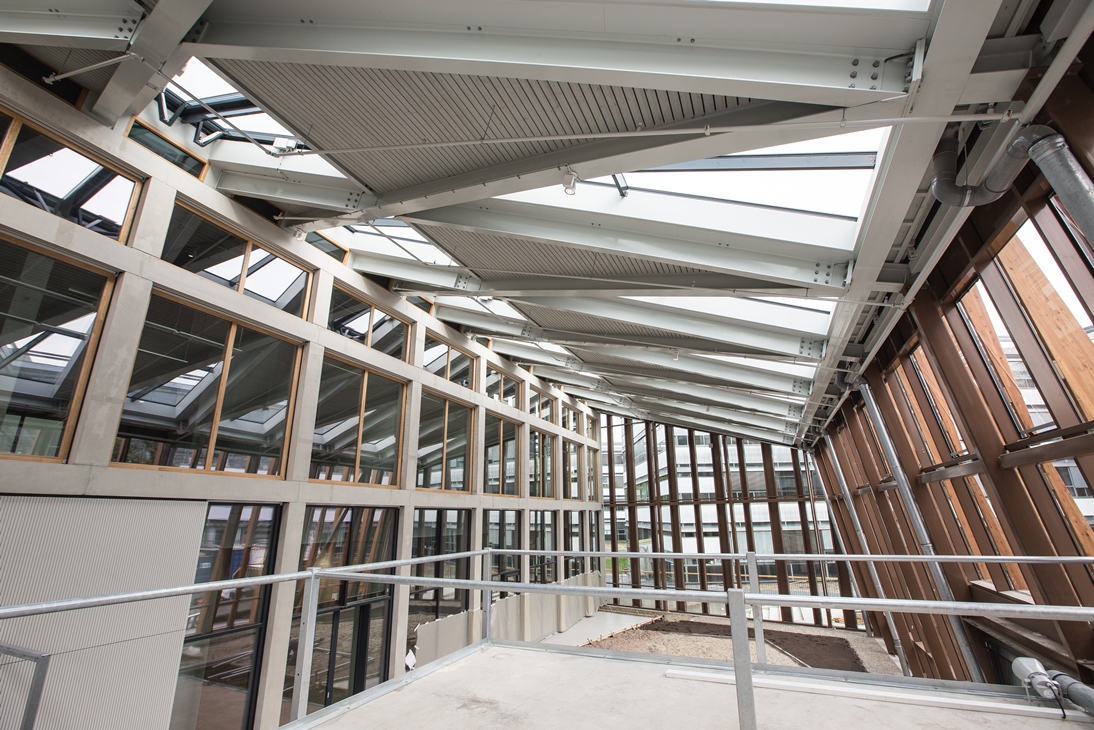
Extreem duurzame oplossingen en aardbevingsveilig
Het gebouw (15.000 m2) heeft een voorbeeldfunctie in een tijd dat het gebruik van fossiele brandstoffen en andere vervuilende en onzuinige oplossingen tot het verleden moeten gaan behoren. Het extreem energiezuinige gebouw met het allerhoogste certificaat op duurzaamheidsprestaties, behoort tot de zogeheten BREEAM Outstanding-klasse. Het is niet voor niets het meest duurzame onderwijsgebouw van Nederland. Dankzij een slim ontwerp wordt de energiebehoefte niet alleen laag gehouden maar bovendien is het gebouw in staat om meer energie te produceren dan het verbruikt.
Het gebouw bestaat grofweg uit twee bouwdelen. Aan de noordzijde komen de onderzoeksruimtes met laboratoria en aanverwante werkruimtes en aan de zuidkant bevinden zich werklandschappen, een wintertuin en onderwijsruimten. De wintertuin is een belangrijke bufferzone waar lucht wordt geacclimatiseerd.
Slim gebruik maken van de natuur
Hoe? Voor dit gebouw is gekozen voor een low-tech benadering van het energievraagstuk. En wordt optimaal gebruik gemaakt van wat in ruime mate voorhanden is: de elementen aarde, water, lucht en zonlicht. Zonnepanelen leveren energie, een ‘zonneschoorsteen’ helpt de natuurlijke ventilatie, een aantrekkelijk binnenklimaat ontstaat door de wintertuin en door het gebruik van aardwarmte en –koeling. Tot slot wordt regenwater opgevangen voor toiletspoeling en plantenbewatering. Tegelijkertijd is de Energy Academy het eerste nieuwe grote aardbevingsveilige gebouw in Groningen. > Lees meer
Als de natuurlijke bronnen tijdelijk niet voldoen, zijn back-upinstallaties voorzien voor verwarming, ventilatie en verlichting.
October 2016
Photographer is Gerhard Taatgen.
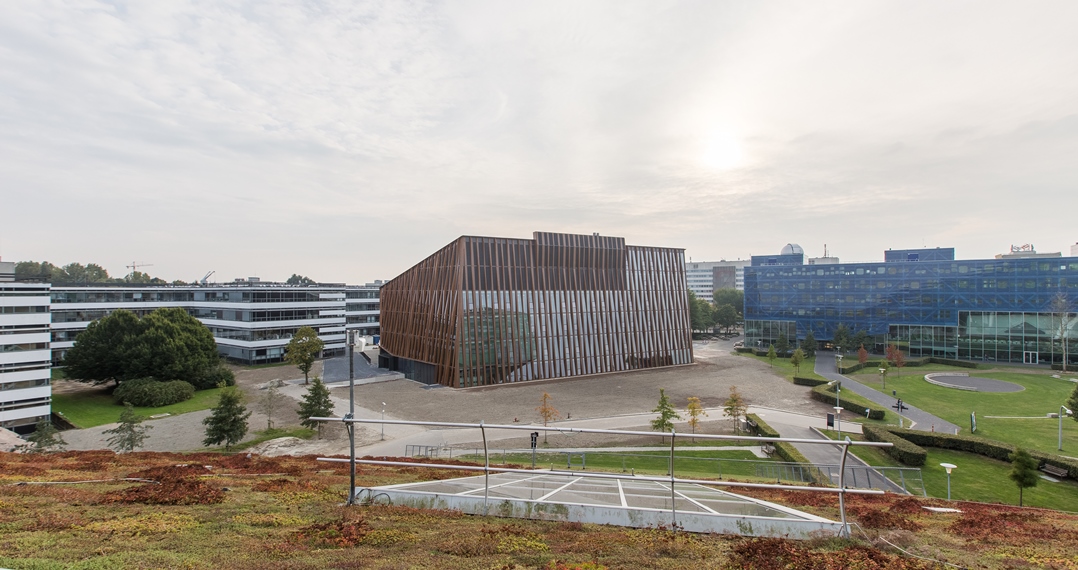
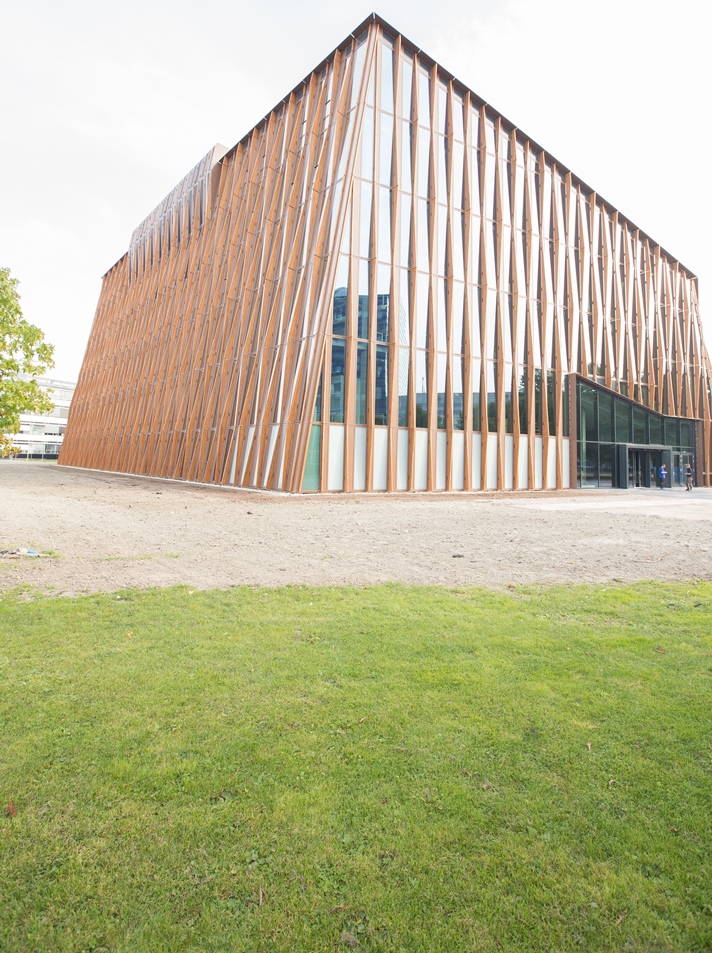
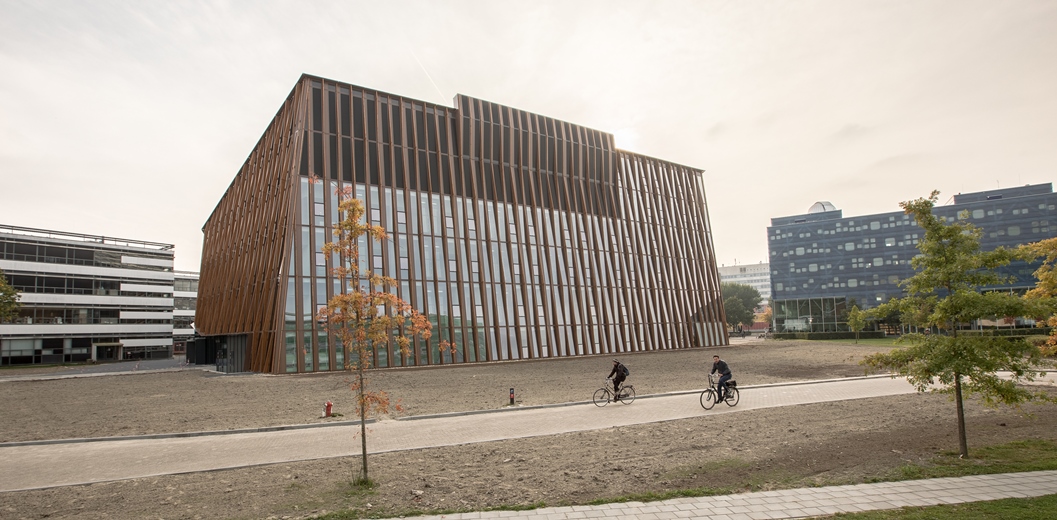
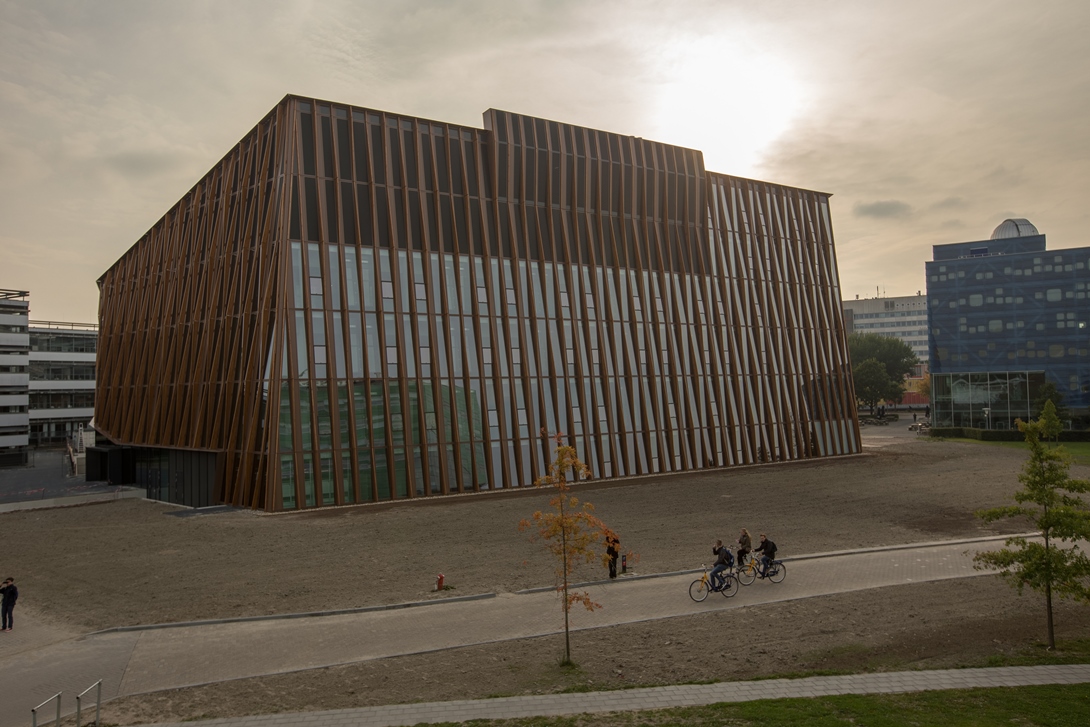
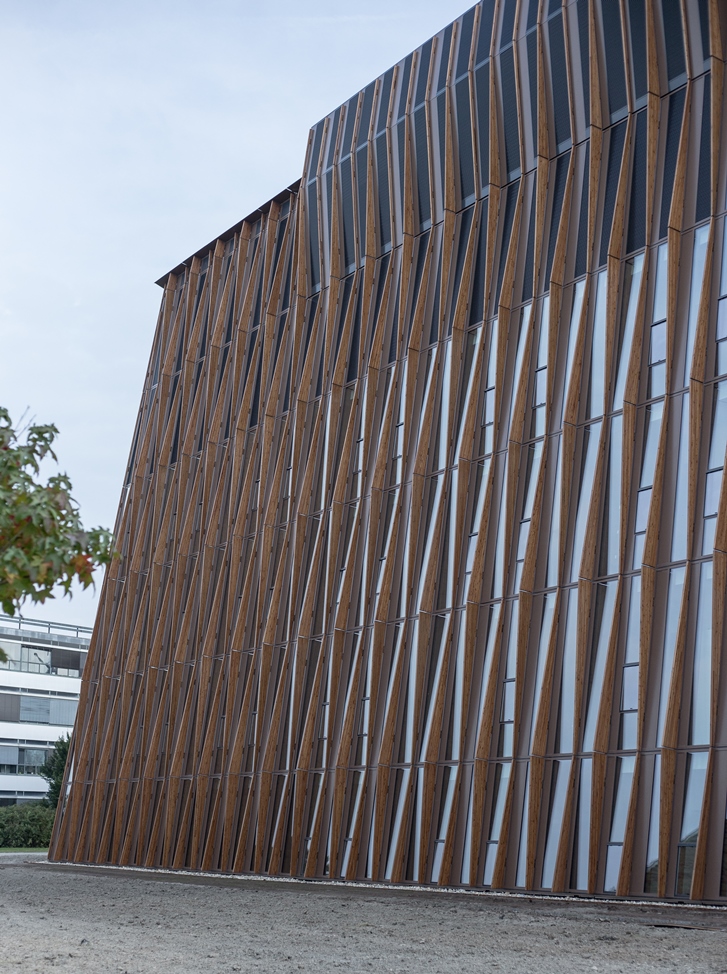
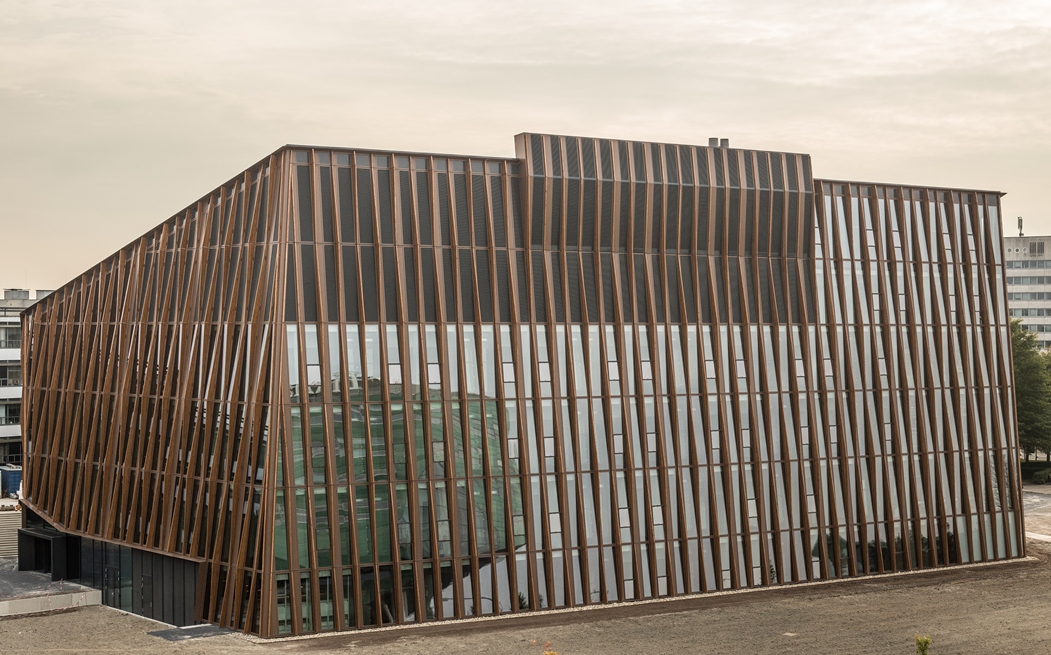
Frisse lucht op de juiste temperatuur zonder energie
Een in het oog springende oplossing voor natuurlijke ventilatie op de juiste temperatuur is de ‘zonneschoorsteen’ in combinatie met de binnentuin en een labyrint onder het gebouw. De zonneschoorsteen bovenaan het gebouw is een warme plek die luchtstroming aantrekt. De lucht komt onderin het gebouw binnen en stroomt langzaam door een lang gangenstelsel (labyrint) onder het gebouw, waar aardwarmte (in de winter) en -koeling (in de zomer) zorgt voor de juiste temperatuur van de lucht.
Lichtspel
“Je merkt aan alles dat dit een bijzonder gebouw is, wij noemen het ook wel de gebouwde energiemotor,” vertelt Doeke Reinsma, projectleider van Friso-Koopmans. “Door de unieke combinatie van dakramen en zonnepanelen en de oriëntatie van het dak op het zuiden, zorgt de zon voor een steeds veranderend lichtspel. De larikshouten geveldelen creëren schaduw op een speelse manier, waardoor extra zonwering niet nodig is.”
“Het schuin oplopende dak wordt optimaal ingezet voor de opvang van zonne-energie en biedt tegelijkertijd ruimte voor daglichttoetreding. De energiezuinige LED-verlichting fungeert alleen als back-up als het te donker wordt”, vult Herman Sandmann, manager Projecten van ENGIE aan. “De hybride systemen die de overgang van daglicht naar LED-licht dynamisch kunnen opvangen zijn volgens de laatste technologie ontwikkeld en geplaatst. Eenzelfde hybride oplossing is er voor de ventilatie, waarbij natuurlijke trek eigenlijk altijd voldoende frisse lucht levert. Alleen bij uitzondering treedt de mechanische ventilatie in werking.”
Faunatoren
Ook aan haar directe ecologische omgeving levert het gebouw een duurzame bijdrage. Een zogeheten faunatoren en faunavriendelijke begroeiing zorgen voor een aantrekkelijke nest- en schuilomgeving voor bijvoorbeeld vleermuizen en gierzwaluwen, maar ook voor insecten als vlinders en bijen. Bloemrijke grasstroken in nabijheid trekken de insecten, die ook weer als voedsel dienen voor de vogels en vleermuizen.
Energie van de toekomst
Friso-Koopmans en ENGIE zijn er trots op de uitdaging aangegaan te zijn om samen met de RUG het duurzaamste gebouw in Nederland op te leveren. Vanaf november zullen de aanstaande bewoners gefaseerd hun intrede maken in dit prachtige gebouw. Dit zijn het onderzoeksinstituut Energy and Sustainability Research Institute Groningen (ESRIG), medewerkers en studenten van de Hanzehogeschool Groningen, Energy Academy Europe, Energy Valley en het Energy Delta Institute. Zij zullen samenwerken om stappen te zetten in de transitie naar de energie van de toekomst.
Dit project wordt mede gefinancierd door het Samenwerkingsverband Noord-Nederland (SNN), het Ruimtelijk Economisch Programma en door het Ministerie van Economische Zaken.
Aan de totstandkoming van het gebouw hebben meegewerkt:
Aannemers
|
Bouwtechnisch: |
Bouwcombinatie Friso-Koopmans |
|
Technisch dienstverlener: |
ENGIE |
|
WKO: |
UNICA |
|
Laboratoria: |
Wesemann |
|
Zonnepanelen (nog te plaatsen): |
One Solar |
Ontwerpende partijen
|
Architectuur: |
Broekbakema i.s.m. De Unie Architecten (voorheen pvanb architecten) |
|
Installatieadvies: |
ARUP |
|
Constructie: |
Wassenaar |
|
Laboratoriumadvies: |
dr. Heinekamp |
|
Bouwfysica en Brandveiligheid: |
DGMR |
|
Expert BREEAM: |
DGMR |
|
Management: |
ICS adviseurs |
Noot voor de pers
- Voor meer informatie over de EA-nieuwbouw kunt u kijken op www.rug.nl/groundbreakingwork.
- Bekijk ook deze prachtige animatievideo:
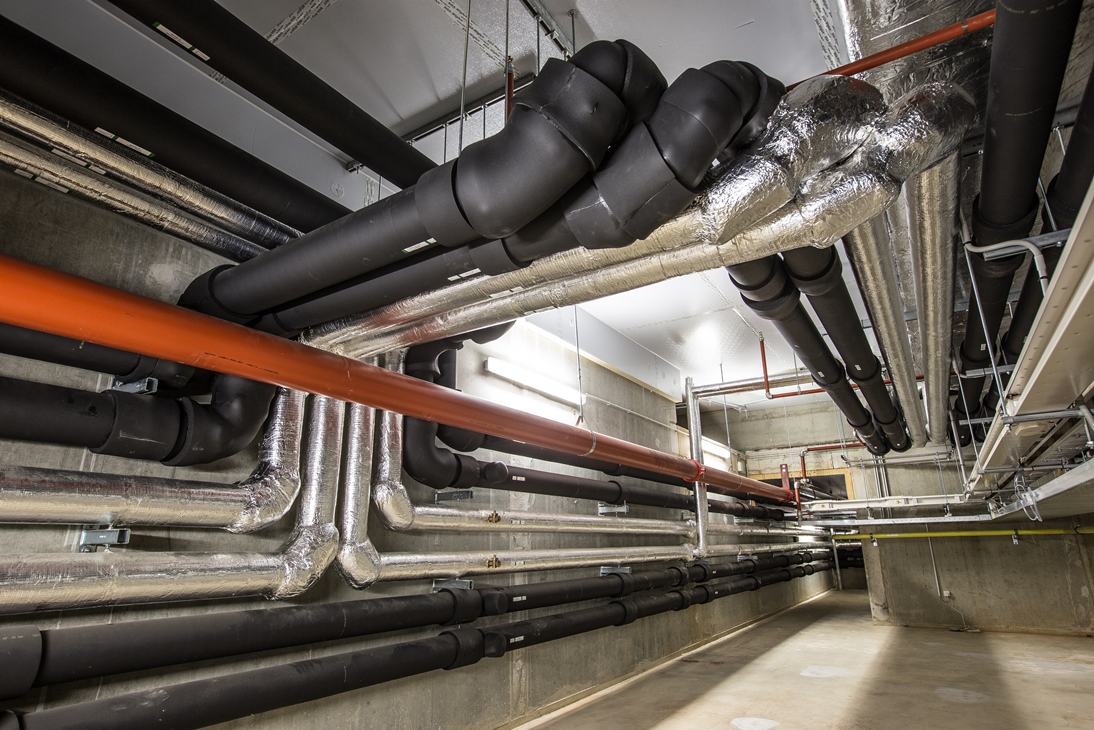
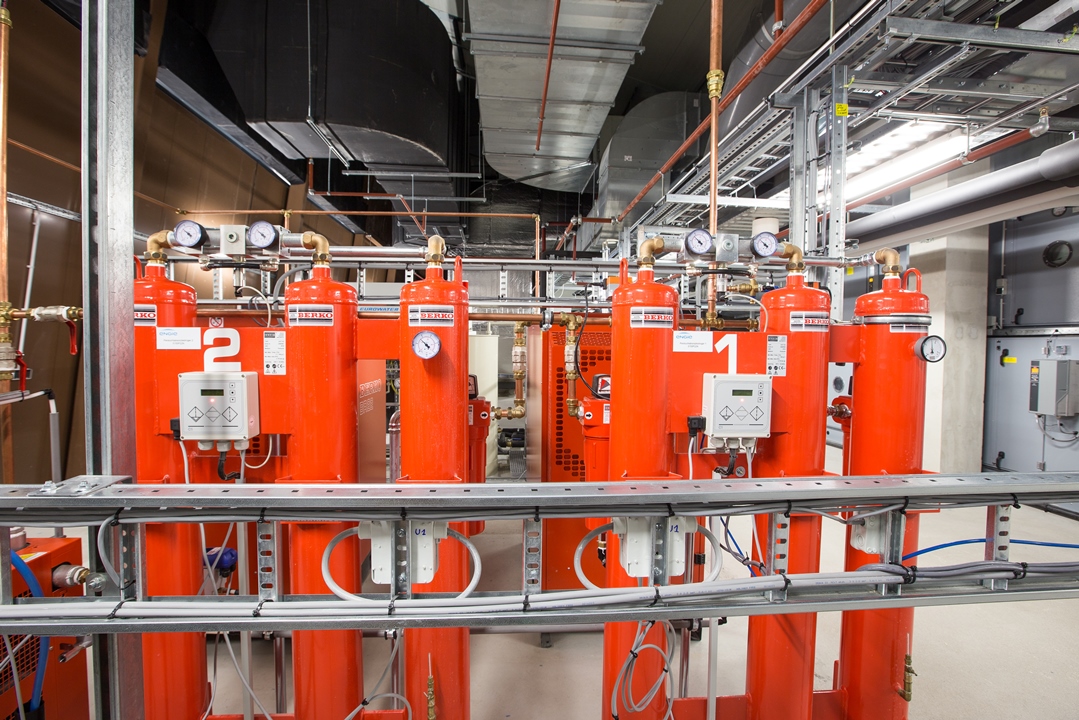
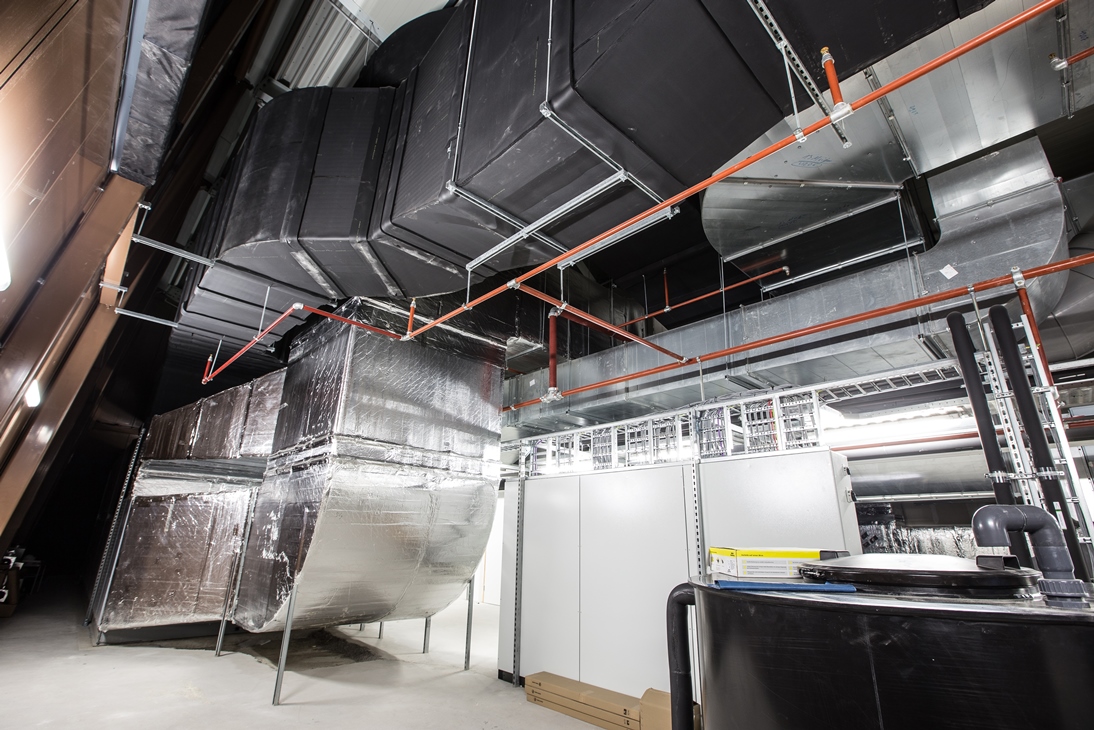
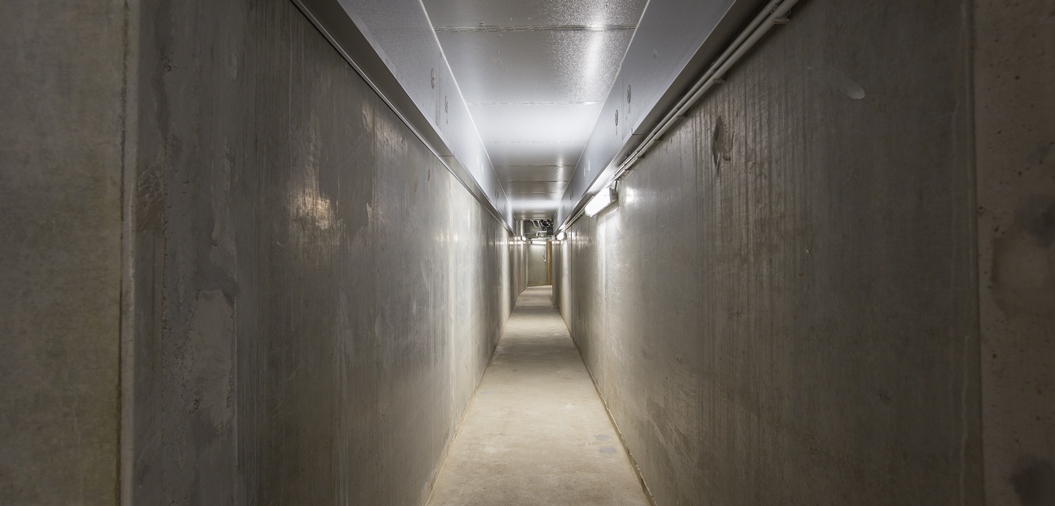
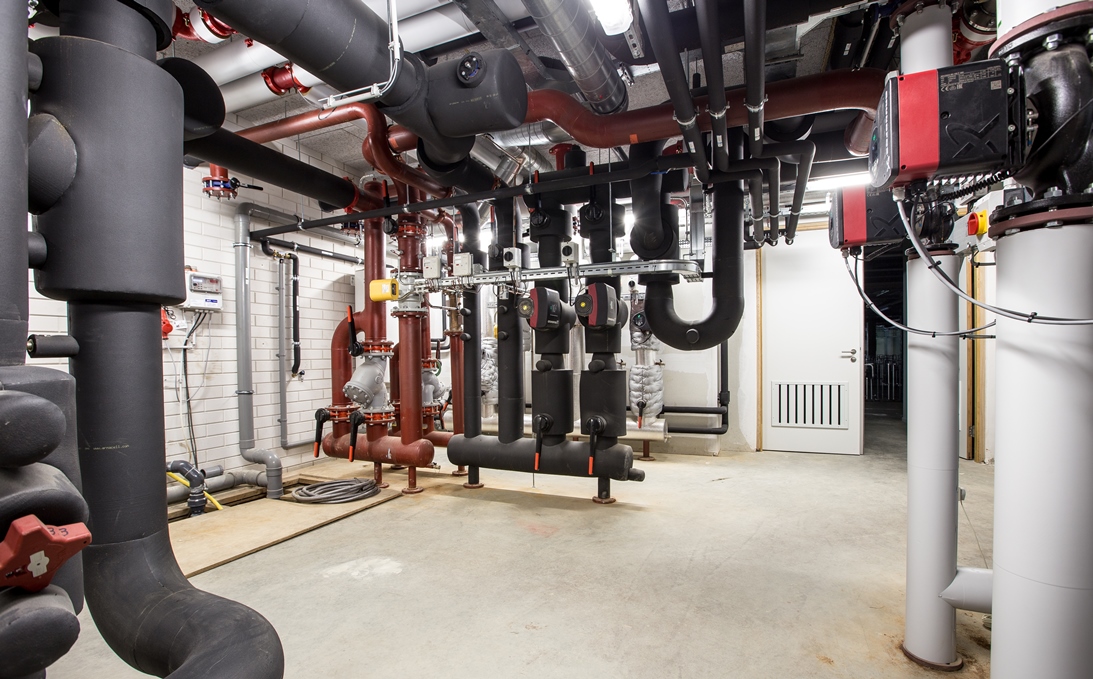
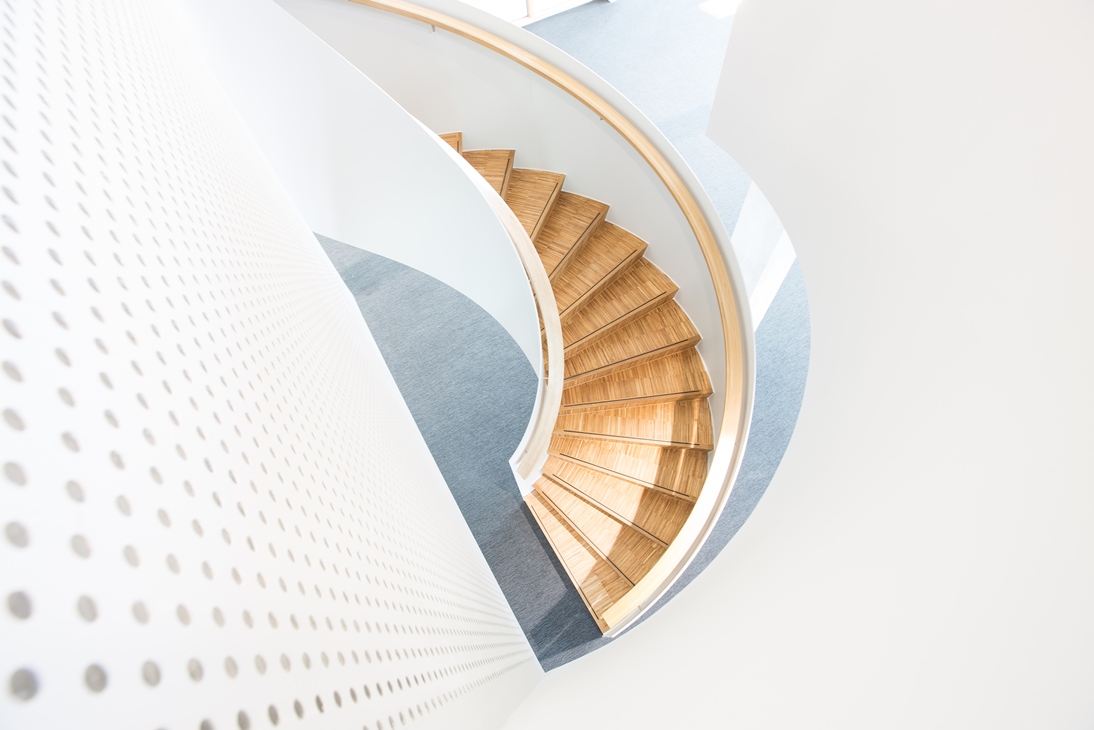
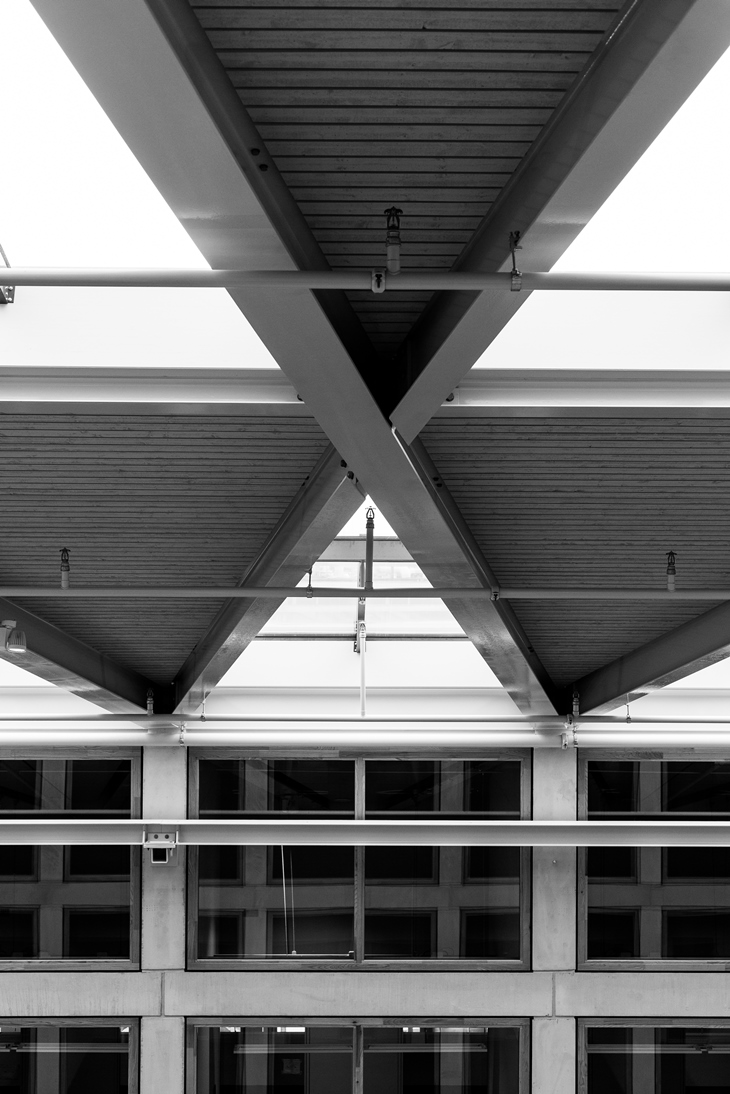
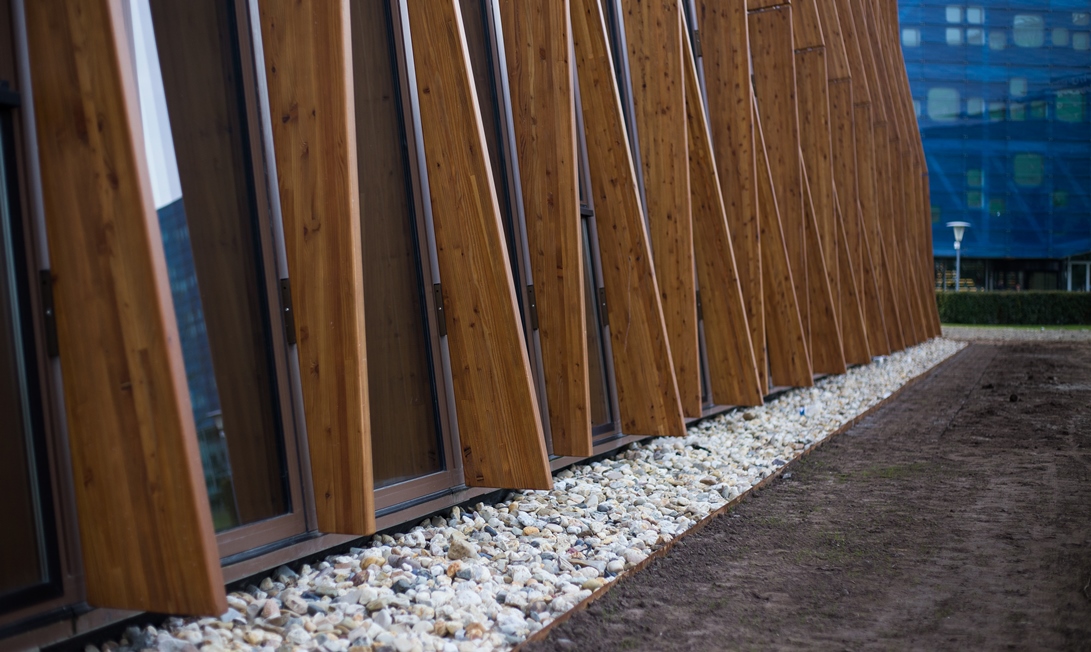
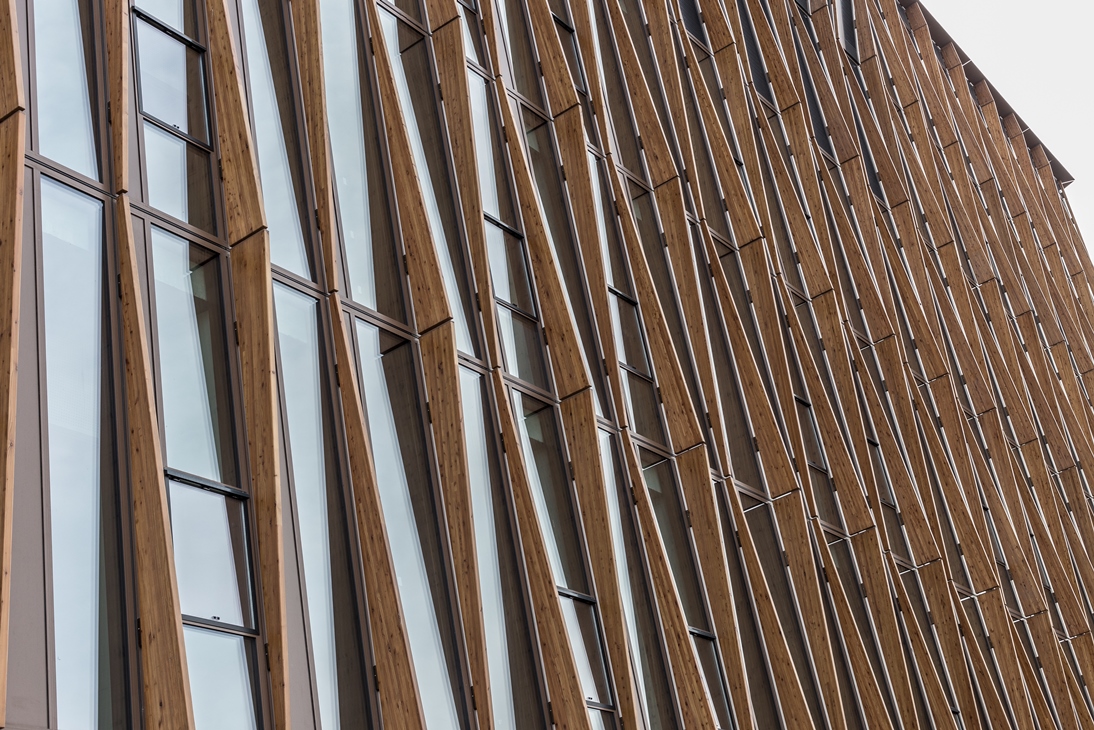
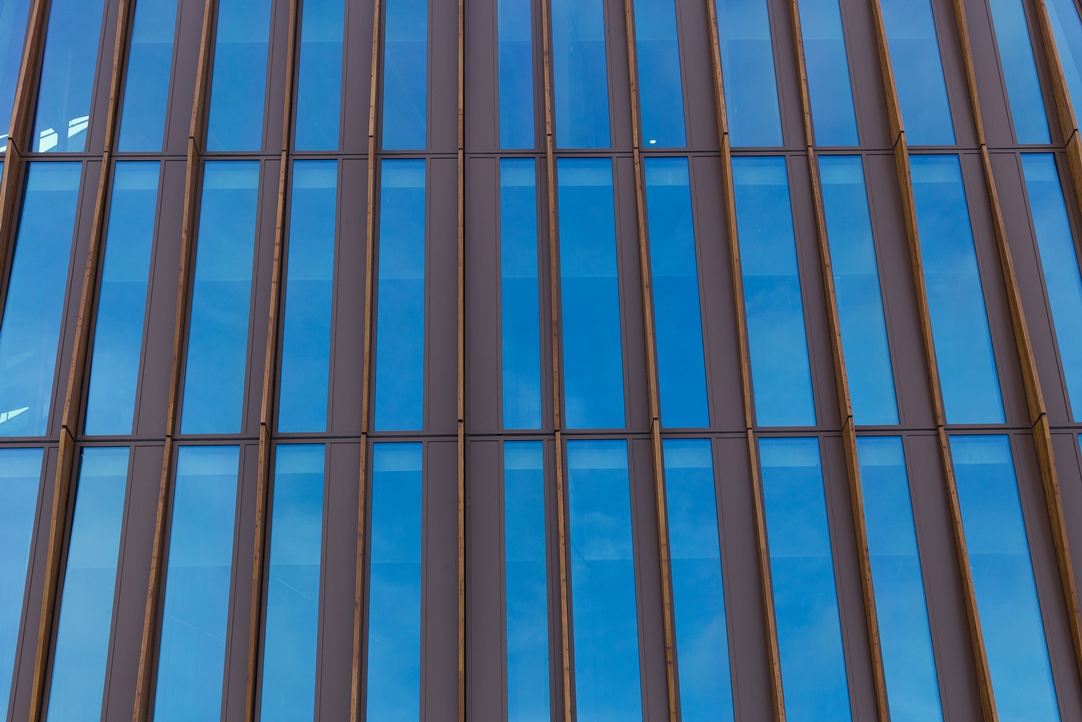
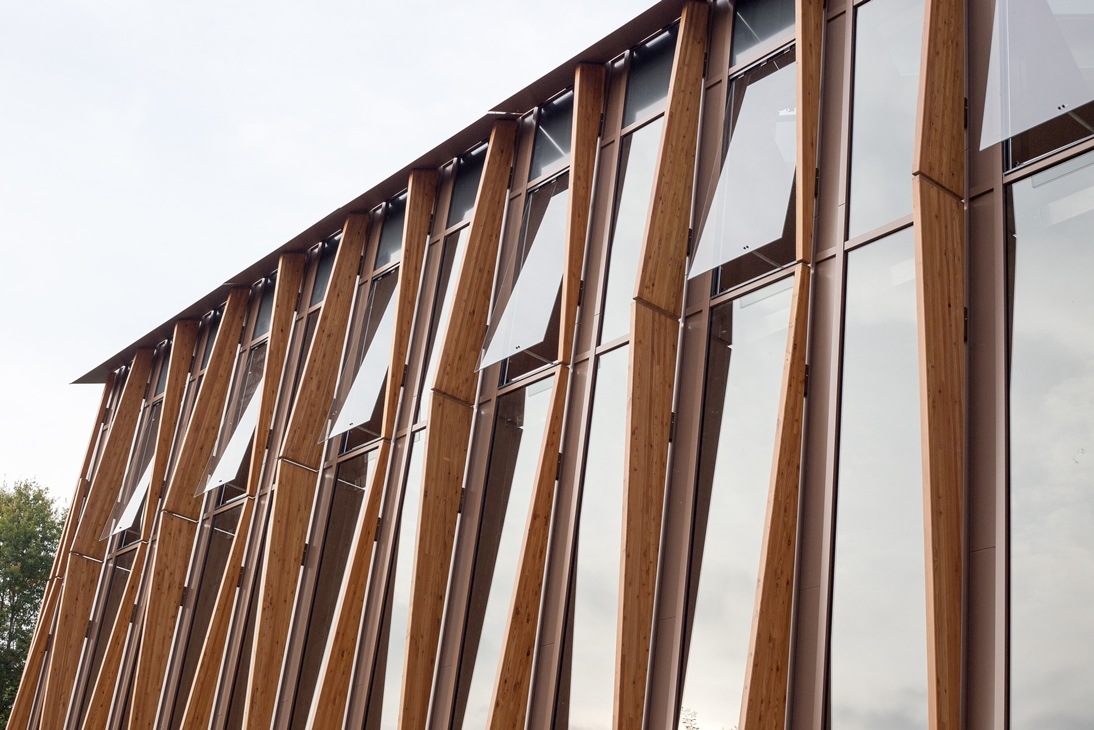
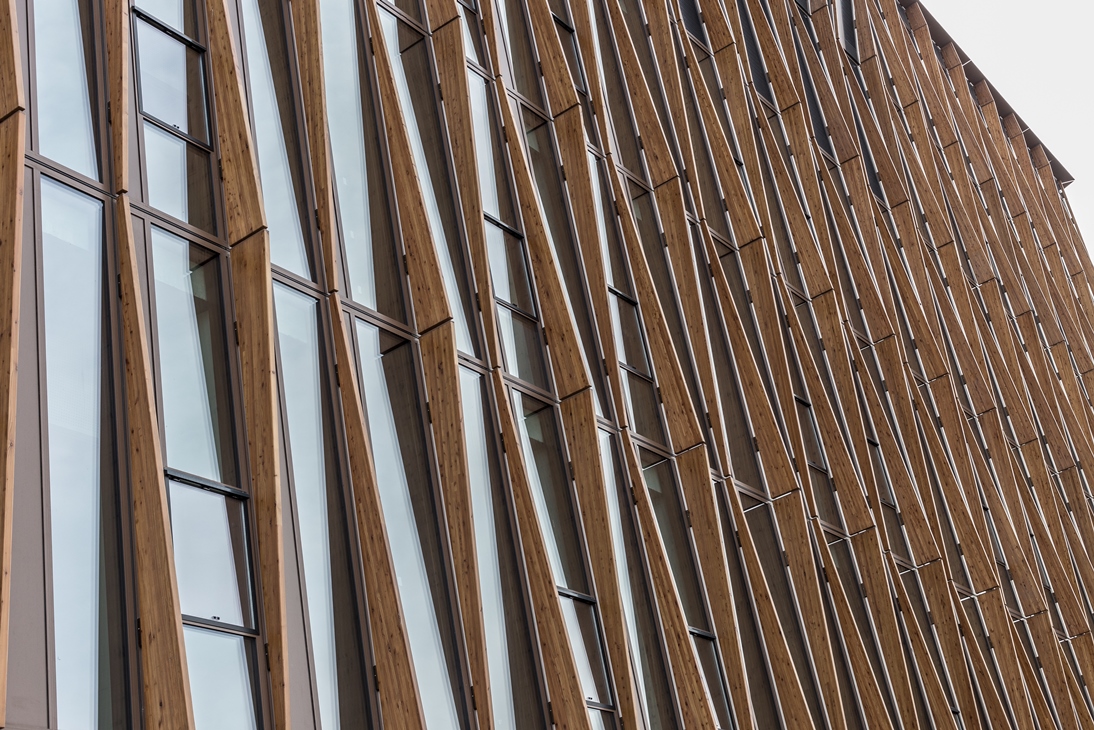
____________________________
Groundbreaking Work
@University of Groningen
| Laatst gewijzigd: | 04 november 2024 12:35 |
Meer nieuws
-
04 juli 2025
RUG reikt verschillende prijzen uit tijdens Ceremony of Merits
De RUG heeft verschillende prijzen uitgereikt aan excellente onderzoekers en studenten tijdens de Ceremony of Merits op 4 juli 2025.
-
02 juli 2025
Relinde Weil herbenoemd als lid van Raad van Toezicht RUG
Het heeft de Minister behaagd Relinde Weil te benoemen voor een tweede termijn als lid van de Raad van Toezicht RUG.
